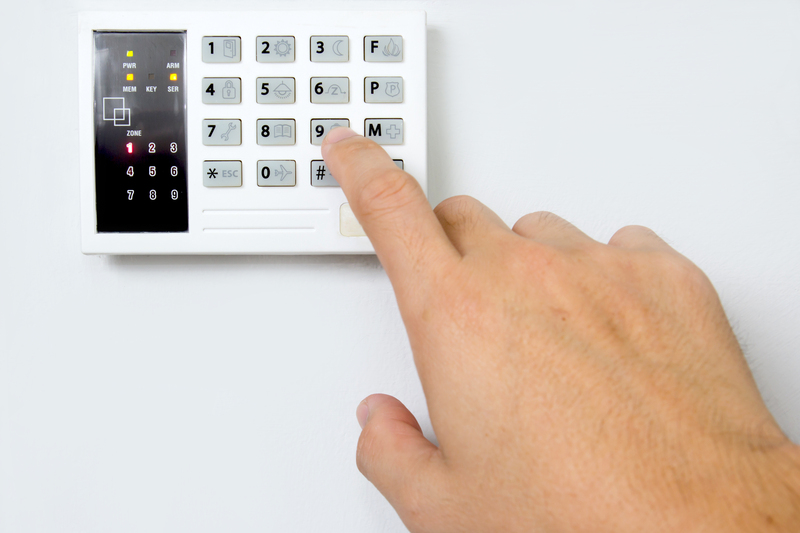Minimize Your Moving Load by Decluttering in Advance: Comprehensive Guide for a Stress-Free Move
Moving to a new home or office is an exciting adventure, but it can quickly become overwhelming when faced with the daunting task of packing and transporting every single possession you've accumulated over the years. However, you can minimize your moving load and make the process more manageable by decluttering in advance. Proper planning and effective decluttering strategies not only help lighten your load but can also save you time, effort, and money during your move. In this comprehensive guide, we'll show you the best methods to declutter before a move, including step-by-step planning, room-by-room strategies, and practical decluttering tips.
Why Minimizing Your Moving Load Through Decluttering Matters
Decluttering before a move isn't just about having fewer boxes to pack. There are many substantial benefits:
- Lower Moving Costs: Movers often base their charges on weight and the volume of items. Less stuff means lower transportation fees.
- Easier Packing and Unpacking: With fewer items, you'll spend less time packing and unpacking, streamlining the entire move.
- Less Stress: Physical clutter often translates to mental clutter. A streamlined move is less overwhelming and reduces moving-related anxiety.
- Opportunity for a Fresh Start: Moving is the perfect chance to reassess your possessions and begin life in your new home with only what you need and love.
- Eco-Friendly Moving: By donating, recycling, and responsibly disposing of unwanted items, you reduce landfill waste and help the environment.

How to Effectively Declutter Before Moving
Now that you understand the benefits of minimizing your moving load, it's time to take action. Here are the key steps you should follow to ensure your decluttering process is efficient and effective:
1. Start Early
Begin your decluttering process as soon as you know you'll be moving. Giving yourself a few months before the move date can help you tackle the job without stress or last-minute rush. A smooth, organized decluttering schedule is crucial for minimizing your moving load.
2. Make a Decluttering Plan
Creating a checklist and timeline can keep you on track. Break down the decluttering process into manageable tasks, such as "Declutter bedroom closet" or "Sort through kitchen cabinets." Assign deadlines to each task and stick to the plan for a systematic approach.
- Create a room-by-room list.
- Allocate specific days or weeks for each space.
- Mark high-priority areas like storage rooms or garages early in your schedule.
- Gather packing supplies in advance.
Room-by-Room Decluttering Strategy
To minimize your moving load by decluttering in advance, it's wise to address each space methodically:
Decluttering the Living Room
- Furniture: Evaluate the condition and necessity of sofas, chairs, and tables. Consider donating or selling pieces you no longer use or those that won't fit in your new space.
- Decor and Accessories: Sort through artwork, frames, and decorative accents. Keep only those that suit the new environment.
- Media Collections: Digitize movies, music, and photos to reduce physical clutter. Donate or recycle outdated physical media.
Kitchen Decluttering Tips
- Small Appliances: Let go of duplicate or rarely used appliances. Donate working items and recycle broken ones responsibly.
- Pantry: Check the expiration dates and throw out expired food. Donate unexpired, non-perishable goods to local charities.
- Cookware and Utensils: Pare down to essentials and quality items you use regularly.
Bedrooms and Closets
- Clothing: The "one-year rule" is a good guide--if you haven't worn something in over a year, it's time to let it go. Donate wearable clothing, recycle textiles, and discard damaged items.
- Bedding and Linens: Keep only what you need. Animal shelters often welcome towels, blankets, and sheets in good condition.
Bathroom Essentials
- Toiletries: Properly dispose of expired products and consolidate duplicates. Donate unopened toiletries to local shelters.
- Medications: Safely dispose of expired or unused medications at approved collection sites.
Office and Paperwork
- Documents: Shred papers with sensitive information that you no longer need. Digitize essential documents.
- Office Supplies: Donate surplus supplies to schools or community centers. Keep only what's necessary.
Garage and Storage Areas
- Tools and Equipment: Retain versatile, high-quality tools and donate duplicates or items you haven't used in years.
- Holiday Decorations: Keep only those in good condition and that you truly intend to use again.
- Sports Gear and Toys: Donate gear your family has outgrown or stopped using.
Effective Decluttering Techniques to Lighten Your Moving Load
Adopting proven sorting and decision-making methods can further streamline your efforts to minimize the moving load:
The Four-Box Method
- Keep: Items that you use often and love.
- Donate/Sell: Items in good condition that someone else can benefit from.
- Recycle: Items that can't be donated but are recyclable.
- Trash: Items that are broken, damaged, or unusable.
Move through each room with these boxes and make firm decisions about each item. This method speeds up the process and prevents second-guessing.
The KonMari Method
Marie Kondo's KonMari method focuses on keeping only the items that "spark joy." Hold each item in your hands and assess whether it has a place in your new life. If not, thank it and let it go.
One-In, One-Out Rule
This lifestyle rule is perfect to maintain minimalism before and after moving. For each item you decide to pack for your new home, consider letting another go.
Donating, Recycling, and Selling Your Discarded Items
Decluttering for a move is not just about throwing things away. To minimize your moving load in an eco-friendly way, consider:
- Donating: Clothing, furniture, housewares, and books can be donated to local charities, shelters, and community centers.
- Selling: Hold a garage sale, use online marketplaces, or apps to sell valuables. This can even offset some of your moving expenses.
- Recycling: Many communities offer bulk recycling days or drop-off locations for items like electronics, batteries, and old paint.
Pro Tip: Take note of tax-deductible donations by saving your receipts and tracking your contributions.
How to Pack After Decluttering
Once you've successfully minimized your moving load through decluttering, packing becomes much easier and more organized. Here are some efficient packing pointers:
- Pack by Room: Keep similar items together and label your boxes clearly. This will make unpacking in your new home infinitely simpler.
- Use Quality Supplies: Invest in sturdy boxes, bubble wrap, and packing tape to keep your streamlined possessions safe.
- Pack an Essentials Box: After decluttering, this box should only contain the items you'll need in the first 24-48 hours in your new place (e.g., toiletries, a change of clothes, pet supplies).
- Don't Overpack Boxes: Even with fewer items, make sure boxes are not overloaded; distribute weight evenly to avoid damage.
Common Decluttering Mistakes to Avoid Before Moving
- Waiting until the last minute: Procrastinating can lead to unnecessary stress and rushed, poor decision-making.
- Being indecisive: If you can't decide whether to keep an item, ask yourself, "When was the last time I used this?"
- Forgetting sentimental items: Memories are important, but be realistic. Instead of keeping everything, photograph or digitize items with sentimental value.
- Not planning donation pickups: Some organizations need scheduling in advance, so plan accordingly.
- Ignoring local disposal rules: Different cities have rules for recycling and bulk item pickup, so do your research before discarding items.
Tips for a Successful Decluttering Experience
- Set realistic goals: Tackle one space at a time to avoid feeling overwhelmed.
- Enlist help: Get family, friends, or professional organizers involved to speed up the process.
- Stay motivated: Remind yourself of the benefits--lighter moving load, reduced costs, and a fresh new start.
- Celebrate small wins: Every bag of donations or box of recyclables moved out is progress!

Frequently Asked Questions About Minimizing Your Moving Load
How far in advance should I start decluttering?
Ideally, begin decluttering at least 2-3 months before your moving date. This provides ample time to sort, donate, sell, or discard items without feeling pressured.
Can I donate all my unwanted items?
While many items are suitable for donation, check local guidelines or charity lists for accepted goods. Broken, dirty, or unsafe items are generally not accepted.
Is it better to hire a professional organizer?
If you have a large home or a tight timeline, professional organizers can be a wise investment. They offer expert guidance and can help you stay on track.
What if my new home is smaller?
Minimizing your moving load by decluttering in advance is even more important in this scenario. Focus on essentials and multipurpose items to save space and maximize functionality.
How do I handle sentimental belongings?
It can be tough! Try designating a small "memory box" for the most meaningful keepsakes and let go of items that no longer add value to your life or fit your future goals.
Conclusion: Lighten Your Move and Start Fresh!
Taking the time to declutter before your move allows you to minimize your moving load in every sense of the word--your physical, emotional, and financial burdens will all be lighter! Whether you're moving across town or to a new country, decluttering in advance ensures a smoother, faster, and more joyful transition.
Embrace the process, utilize these practical strategies, and look forward to starting the next chapter of your life unburdened by unnecessary possessions. Your future self will thank you!
Ready to get started? Make your moving checklist today and begin decluttering for a fresh, organized new beginning!



